7-Day Custom Keto Diet Meal Plan for Beginners to Lose Weight Fast: Quick Start Guide
This post contains affiliate links. If you make a purchase through these links, I may earn a small commission at no extra cost to you. Learn more.
A 7-Day Keto Diet Meal Plan can be a transformative start for beginners looking to lose weight effectively. This approach helps maintain a low-carb intake while providing adequate protein and high fat, making it a powerful tool for weight loss.
By designing a personalized keto meal plan, newcomers can tailor their diet to fit specific preferences and nutritional needs, ensuring a more sustainable and enjoyable journey.
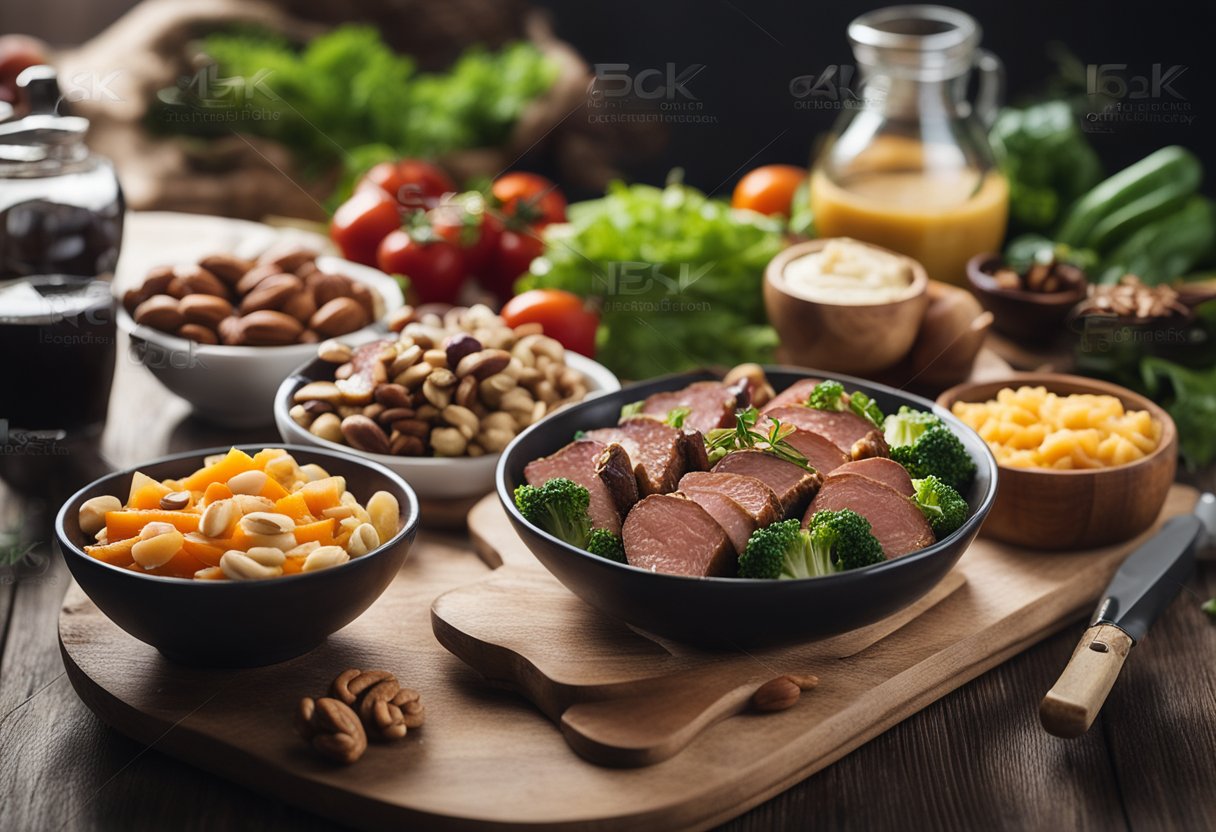
Exploring the benefits of a keto diet, individuals can experience improved energy levels, mental clarity, and a greater sense of control over their dietary habits. The shift to ketosis encourages the body to burn fat for fuel, supporting significant weight reduction.
For those just beginning, a structured meal plan simplifies the transition and minimizes the stress of dietary changes.
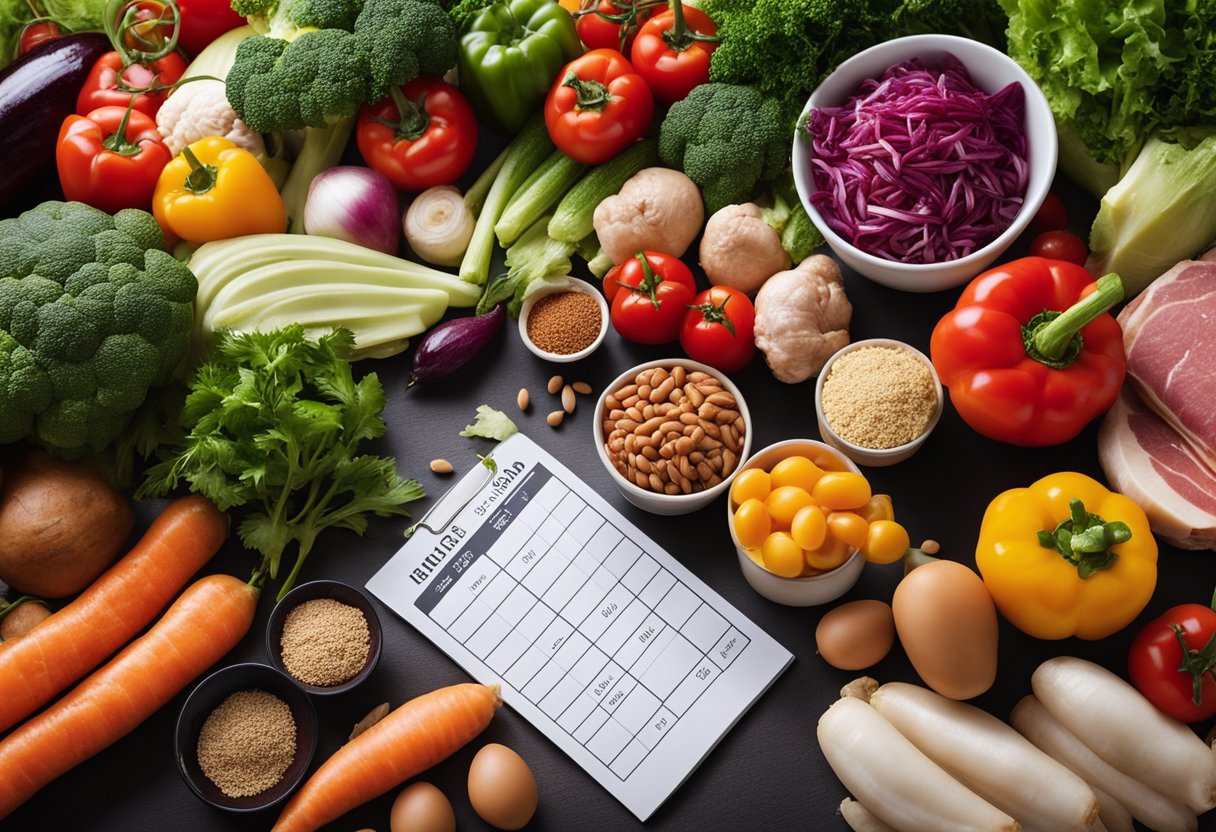
Understanding the Keto Diet
The ketogenic diet focuses on drastically reducing carbohydrate intake and replacing it with fat. This shift aims to induce a metabolic state called ketosis, where the body burns fat for fuel instead of carbs.
What Is the Keto Diet?
The keto diet is a high-fat, low-carbohydrate diet that aims to change the way the body produces energy. By limiting carb intake to around 5-10% of daily calories, it encourages the body to use fat as its primary energy source.
Proteins typically constitute 15-20% of the diet, while fats make up the remaining 70-80%.
Originating as a treatment for epilepsy, today it is popular for promoting weight loss and improving metabolic health. This diet’s main focus is to trigger ketosis consistently, which is the state where fat storage is broken down into ketones that the body uses to fuel itself.
How Does the Keto Diet Work?
In a keto diet, when carbohydrate intake is drastically reduced, the body enters a state called ketosis. In this state, insulin levels drop, and the body begins to burn stored fat for energy instead of glucose.
This results in the production of ketone bodies in the liver, which then serve as an alternative energy source for the brain and body.
The transition to ketosis typically occurs within 2-4 days of starting the diet, provided carb intake stays low enough. This metabolic change can lead to efficient fat burning, often resulting in weight loss and improved energy levels.
Keto Diet Basics
Following the keto diet involves focusing on certain foods while avoiding others. Staple foods include high-fat sources like meats, fatty fish, eggs, butter, nuts, seeds, and oils.
Vegetables that are low in carbohydrates, such as leafy greens and cruciferous vegetables, are also integral.
It’s crucial to avoid grains, sugars, legumes, and fruits high in natural sugars since they can disrupt ketosis.
Meal planning is essential, as maintaining the correct macro ratio is key for the diet’s success. Products like sugar-free sweeteners can be used in moderation.
Finding the right balance of ingredients ensures the body remains in ketosis and benefits optimally from this dietary approach.
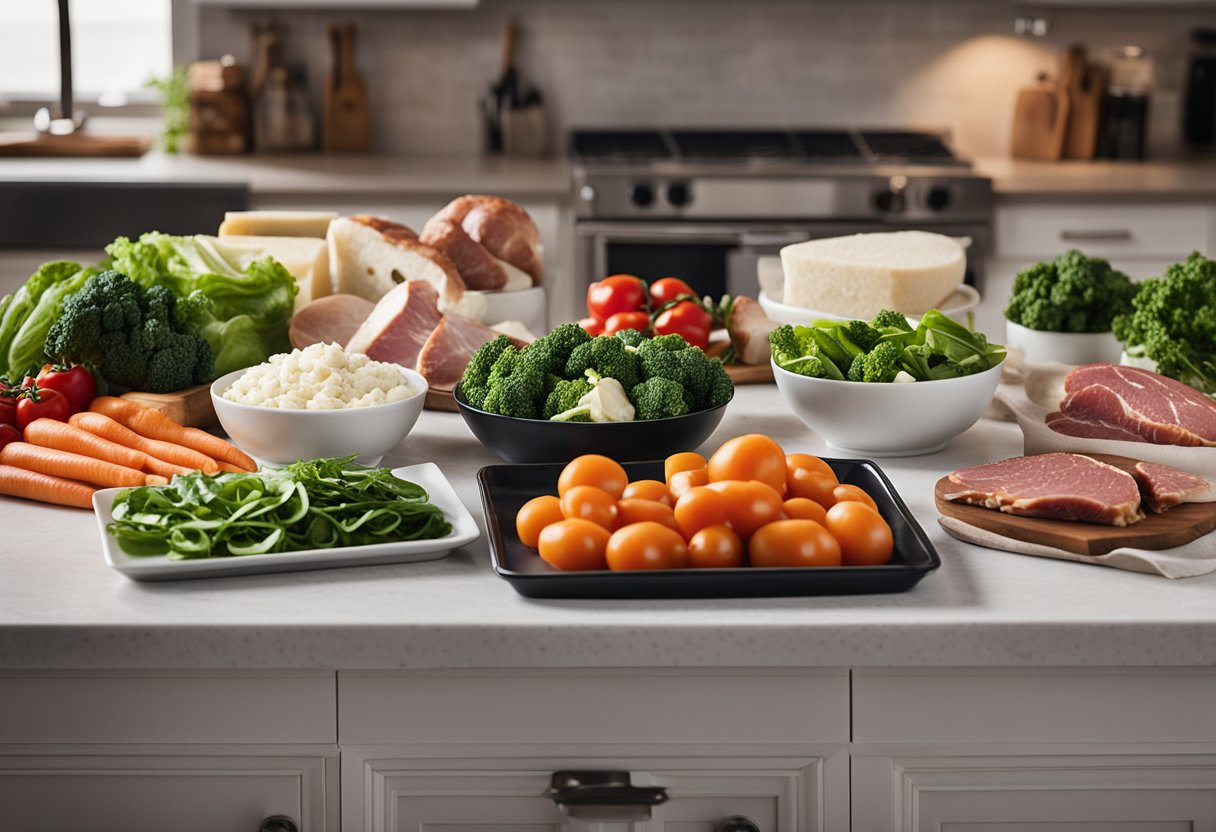
Custom Keto Meal Plans
Custom keto meal plans provide an individualized approach to following a ketogenic diet. These plans are tailored to fit personal tastes, nutritional needs, and weight loss goals, offering an efficient path to achieving desired results.
Benefits of Customized Keto Plans
Customized keto meal plans cater to individual preferences, ensuring dietary satisfaction. They accommodate specific calorie intake and macronutrient ratios, ideal for those with unique dietary restrictions or goals.
By incorporating favorite foods and avoiding dislikes, adherence to the diet becomes easier.
Personalization reduces the stress of daily meal decisions. With streamlined grocery lists and meal prep schedules, the plan saves time and enhances motivation.
Avoiding the generic, one-size-fits-all approach ensures that nutritional needs are continually met, promoting steady weight loss.
Taking the Custom Keto Diet Quiz
Taking the custom keto diet quiz is a pivotal step in formulating a personalized plan. This quiz considers factors like age, weight, dietary preferences, and lifestyle.
By gathering this data, it crafts a tailored meal plan aligning with specific health objectives.
The interactive quiz typically asks about current health status and activity levels.
It’s designed to ensure that the plan not only supports weight loss but also maintains energy levels and overall well-being.
Individuals gain insight into what keto strategies work best for them.
Reviewing Custom Keto Diet Options
Reviewing custom keto diet options reveals varied plans designed to satisfy individual needs. Many platforms offer these tailored plans, featuring adjustable meal ideas and clear instructions.
Various platforms such as Wholesome Yum and Perfect Keto provide pre-built and customizable plans, emphasizing flexibility in food choices.
These options allow users to find convenient meal sequences and adjust based on progress or taste changes, ensuring long-term diet success.
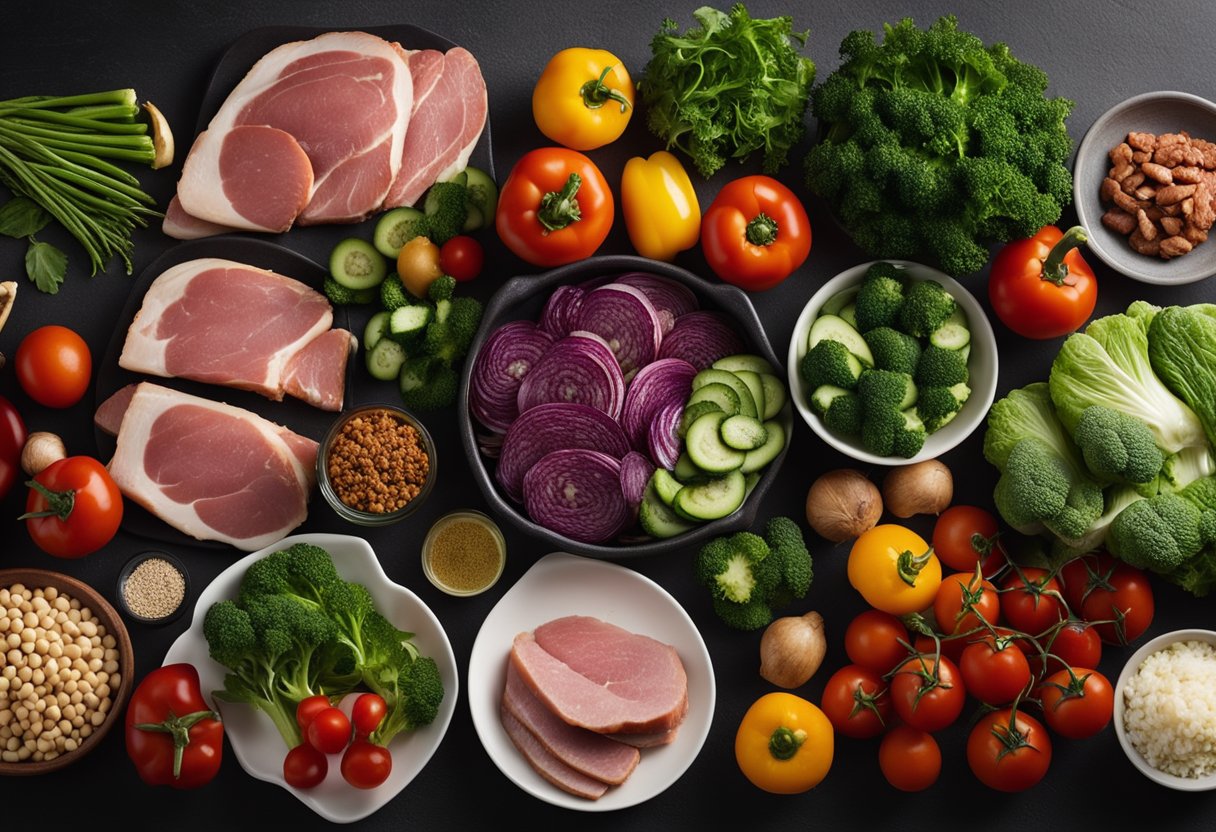
Setting Up Your Keto Diet Plan
Starting a keto diet involves careful planning to ensure nutritional balance and effective weight loss. This involves selecting appropriate foods and understanding how to calculate the right macronutrient requirements.
Getting Started With Your Custom Keto Diet
Embarking on a keto diet requires an understanding of personal dietary needs and goals. Begin by setting clear objectives for weight loss or health. This helps tailor the diet to individual needs.
Personal preferences and lifestyle should also be considered.
A custom meal plan can offer structure, aiding in maintaining consistency. Online tools and resources, such as meal planning apps, can provide valuable guidance. Tracking progress is essential in making necessary adjustments to achieve effective results.
Foods to Focus On and Avoid
The keto diet emphasizes high-fat and low-carbohydrate foods.
Focus on incorporating foods like avocados, nuts, seeds, and fatty fish. These options provide healthy fats and important nutrients.
Proteins such as poultry, eggs, and beef are also essential for a balanced keto diet.
It’s crucial to avoid high-carb foods such as bread, pasta, rice, and sugary snacks. These can interfere with ketosis.
A comprehensive keto diet food list can be a practical tool, highlighting foods to eat or avoid. Incorporating a variety of vegetables like leafy greens, broccoli, and zucchini is recommended.
Keto Diet Macros and Calculating Your Needs
Understanding and calculating the macronutrients is vital for a keto diet.
Typically, the diet consists of 70% fats, 20% protein, and 10% carbohydrates.
Personalizing these percentages based on body type and activity level can enhance results. A keto diet calculator can assist in determining these specific macro needs.
Tracking daily intake ensures adherence to these ratios.
Adjusting the macro distribution may be necessary over time based on progress and personal goals.
Monitoring energy levels, weight changes, and overall well-being can help guide these adjustments.
Maintaining appropriate hydration and electrolyte balance is essential for optimal health on a keto diet.

Meal Planning and Recipes
A 7-day custom keto diet meal plan can be both functional and enjoyable. Strategies for planning meals and discovering recipes are key in making this a sustainable lifestyle choice.
Easy-to-Follow Keto Diet Meal Plans
Creating a keto diet meal plan doesn’t have to be complex. A simple approach helps maintain variety and enjoyment.
Structure each day with three meals and two snacks, focusing on whole foods.
For example, start the day with scrambled eggs cooked in butter with spinach. Lunch can include a grilled chicken salad with olive oil dressing. Dinner might be salmon with broccoli and a side of cauliflower rice.
Weekly meal plans often include rotation of favorite meals to avoid monotony.
Flexibility to substitute similar items is handy for personal preferences or availability. Using apps can assist in grocery shopping and managing meal prep.
Delicious and Satisfying Keto Recipes
Keto recipes can be flavorful and filling despite their limited carb content. Ingredients like avocado, cheese, and coconut oil are staples.
Breakfast might feature avocado toast using almond flour bread. For lunch, a cheese-filled omelet with herbs provides a protein boost.
Dinner ideas include a rich steak cooked in garlic butter, paired with a creamy spinach side. Snacks can include cheese cubes or nuts.
Recipes are adaptable. Substitute ingredients to accommodate dietary restrictions or to enhance flavor. The goal is to make dishes that are enjoyable while keeping within keto guidelines.
Prepping Keto Meals for the Week
Meal prepping is essential for staying on track with a keto diet. Allocate time weekly for planning, shopping, and preparing ingredients.
Start by selecting recipes for the week and creating a shopping list, focusing on fresh, low-carb foods.
Prepare and portion foods in advance, like chopping vegetables or marinating meats, to streamline cooking.
Store meals in airtight containers for freshness. Consider using labels for easy identification.
The efficiency gained from meal prepping reduces the temptation to deviate from the meal plan due to time constraints.
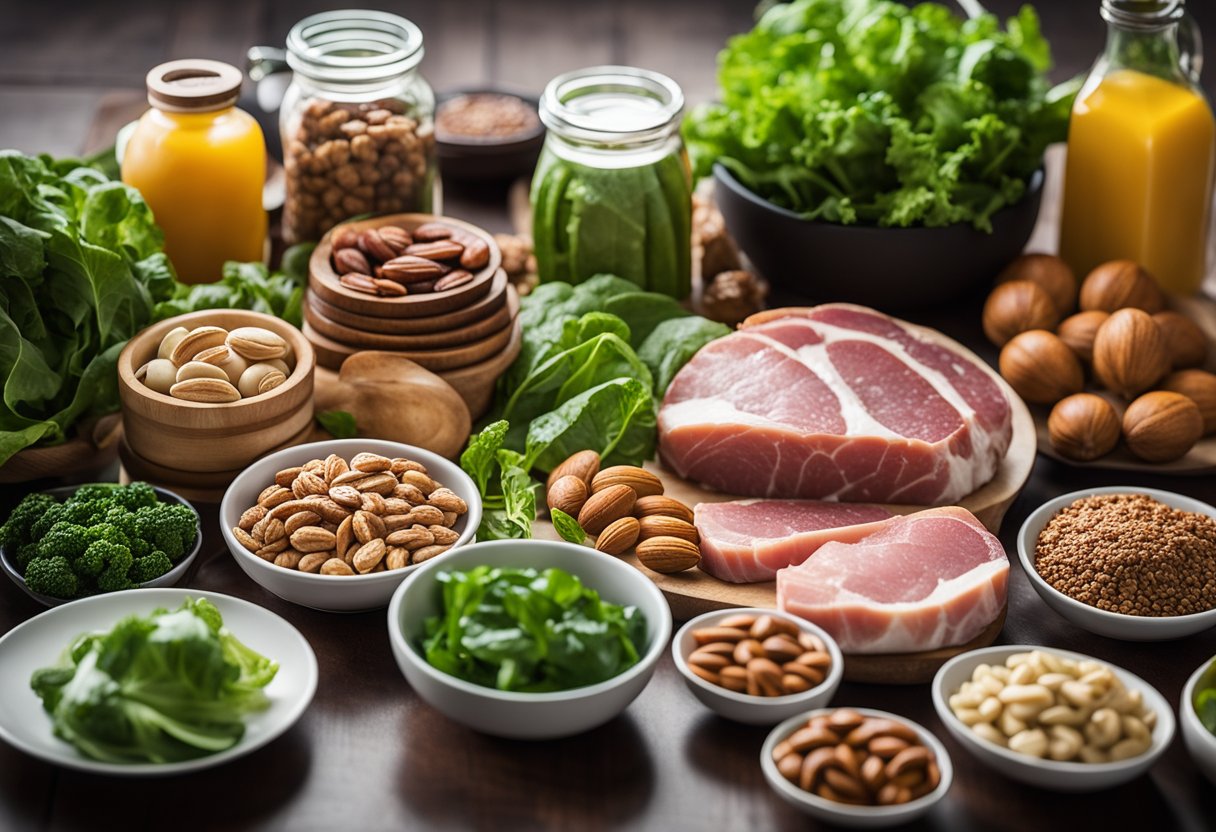
Tips for Success on a Keto Diet
Successfully navigating a keto diet involves recognizing challenges, integrating exercise, and making adjustments for long-term adherence. Understanding how to deal with plateaus and incorporating physical activity effectively can enhance keto results.
Navigating Challenges and Plateaus
When starting a keto diet, initial weight loss can be rapid, but hitting a plateau is common.
To combat this, individuals may need to adjust their calorie intake or macronutrient ratios. Tracking food intake using apps or diaries can help identify areas for modification.
Hydration and electrolyte balance play crucial roles. As carbs decrease, water retention drops, which may cause an imbalance.
Increasing water intake and consuming foods rich in potassium, magnesium, and sodium can help maintain balance and enhance diet adherence.
Experimentation is key. Trying new low-carb recipes and varying meal plans can prevent monotony and help maintain motivation.
Consistently reviewing progress and making small tweaks can keep things on track.
Incorporating Exercise with Keto
Exercise can accelerate weight loss and improve overall health on a keto diet.
Combining resistance training with cardio maximizes fat burning and muscle preservation. Short, high-intensity interval sessions can be more effective than long, steady-state workouts.
Before workouts, consuming a small amount of carbs can help sustain energy levels.
This practice, known as “carb cycling,” involves strategic carb intake without compromising ketosis.
Listening to the body and adjusting as needed ensures workouts complement the diet.
Building a balanced routine is essential. Rest days and sufficient sleep support recovery.
Over time, energy levels typically rise, making exercise more effective and enjoyable.
Long-Term Maintenance and Adjustments
For sustained success, adapting the keto diet to individual needs is vital.
This might mean gradually increasing carb intake or adopting a cyclical keto approach, where higher carbs are consumed on select days.
Monitoring progress through regular check-ins and being open to change helps with long-term maintenance.
This could involve consulting with a nutritionist or healthcare provider to adapt dietary needs as the body’s metabolism changes.
Setting realistic goals ensures the diet remains sustainable.
Including variations in meals and activities can prevent boredom and enhance commitment.
Personalized strategies accommodate lifestyle changes and maintain successful keto diet results.
Frequently Asked Questions
Beginning a keto diet can help individuals lose weight effectively by focusing on low-carb, high-fat foods. Here, common questions about creating and following a beginner’s 7-day keto meal plan for rapid weight loss are addressed.
What should a beginner’s 7-day keto meal plan include to maximize weight loss?
A beginner’s 7-day keto meal plan should include high amounts of healthy fats like avocados, nuts, and oils.
It should also incorporate moderate protein from sources like meat, fish, and eggs while keeping carbohydrates low, typically under 20-50 grams per day, to promote ketosis.
How can I access a free 7-day keto diet meal plan in PDF format?
Free 7-day keto meal plans are often available from health websites and apps dedicated to low-carb nutrition.
These resources may offer PDFs for easy access and convenience in planning meals and grocery shopping.
Which foods are essential to include in a keto diet menu for someone just starting out?
Essential foods for a keto diet menu include fatty fish, like salmon, leafy greens such as spinach, nuts, seeds, and healthy oils.
It’s also important to have non-starchy vegetables and meats to provide necessary nutrients while minimizing carb intake.
Is it possible to lose 10 pounds in the first week of starting a ketogenic diet?
Some individuals may experience significant weight loss, such as 10 pounds, in the first week due to water weight reduction and initial changes in metabolism.
However, results can vary and would depend on factors like adherence, initial weight, and individual metabolism.
What are the key strategies to follow when embarking on a 1-week keto meal plan to lose weight quickly?
To lose weight quickly on a keto meal plan, individuals should focus on staying hydrated, monitoring carb intake closely, and preparing meals in advance.
Consistent portion control and choosing nutrient-dense foods are also integral to achieving desired results.
How effective is a ketogenic diet for rapid weight loss in females, and what might a typical meal chart look like?
A ketogenic diet can be effective for rapid weight loss in females by inducing ketosis, which burns fat for fuel.
A typical meal chart might include meals like an omelet for breakfast, a salad with chicken for lunch, and grilled fish with vegetables for dinner, all with healthy fats incorporated.
